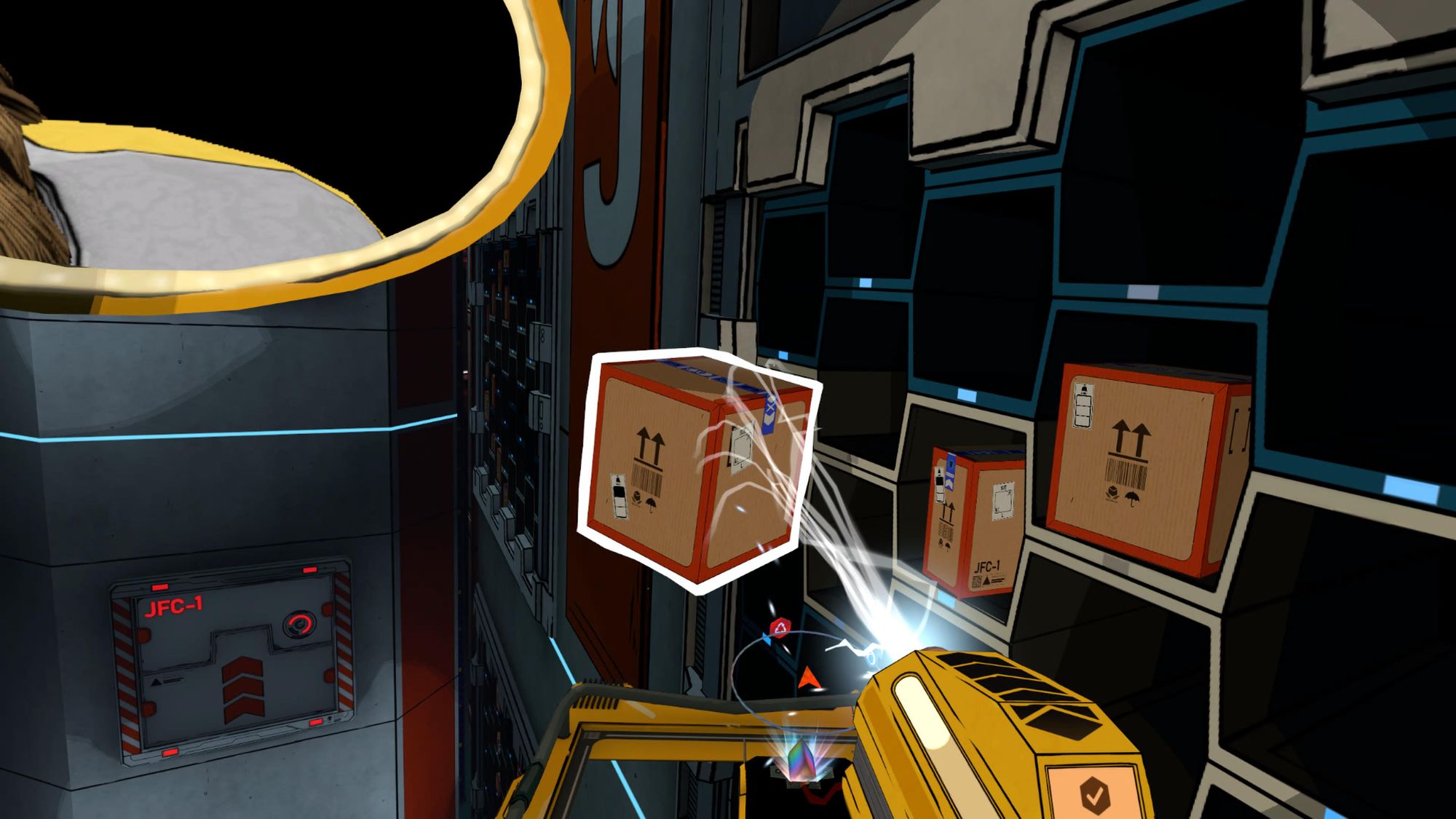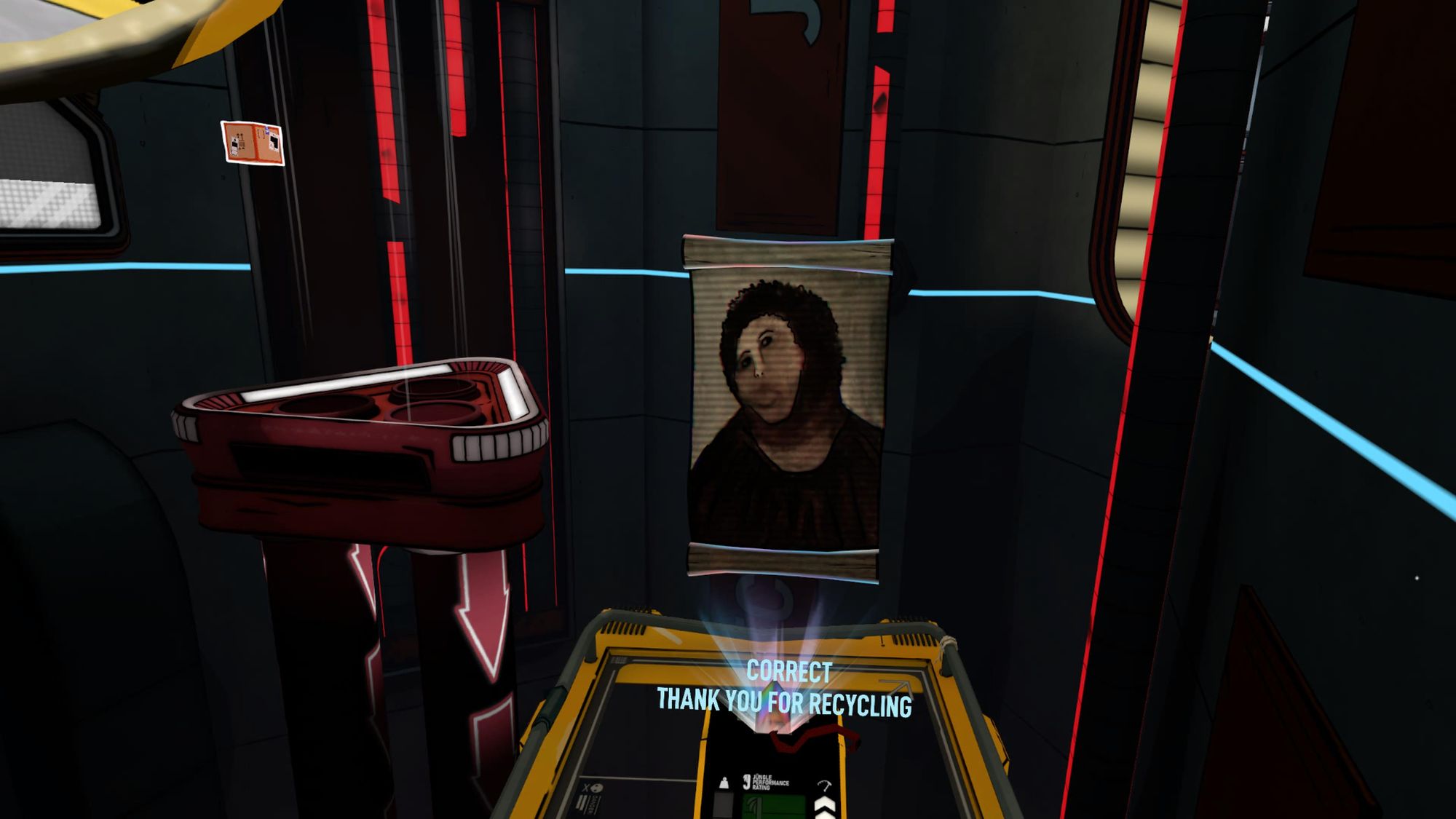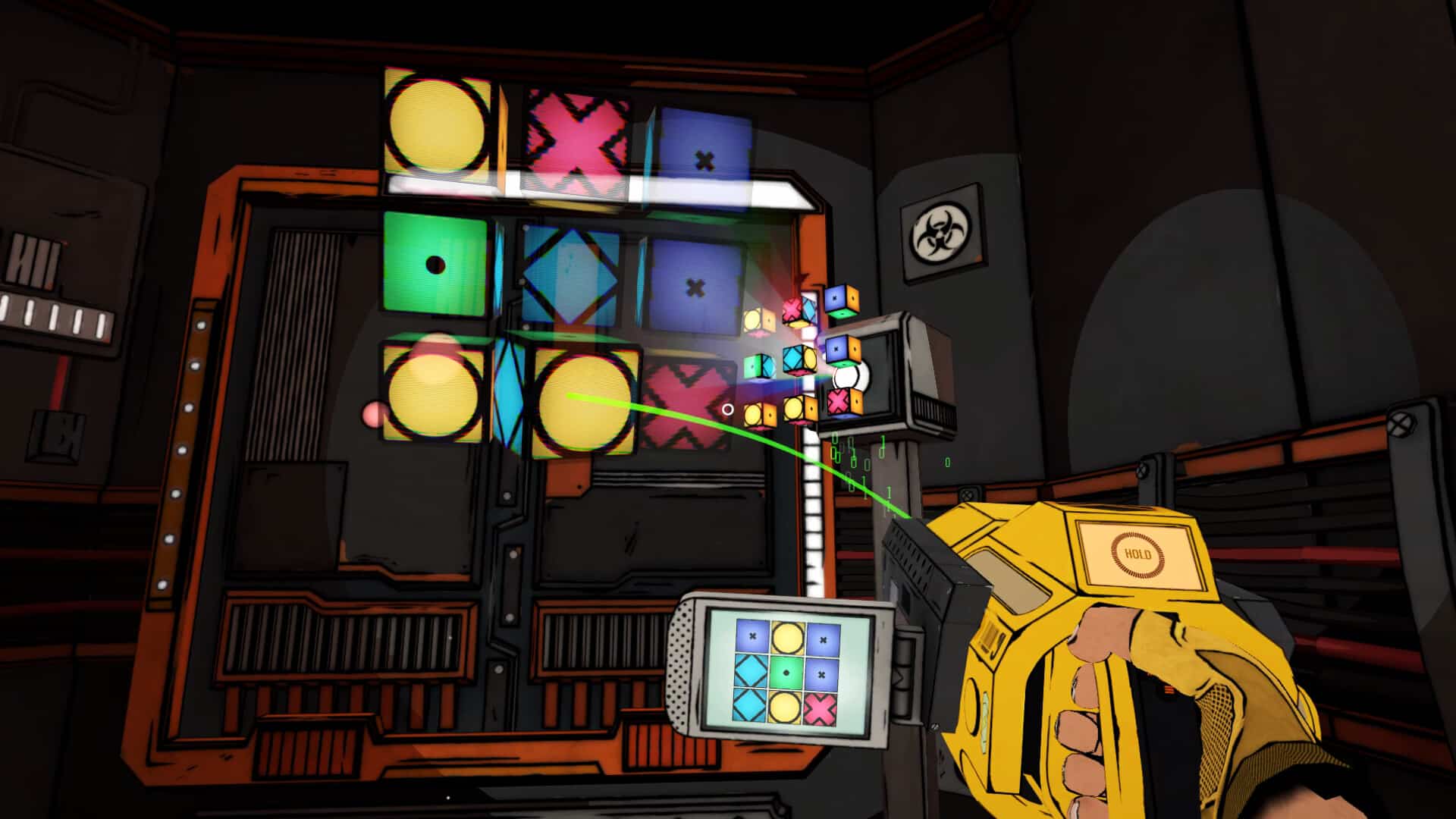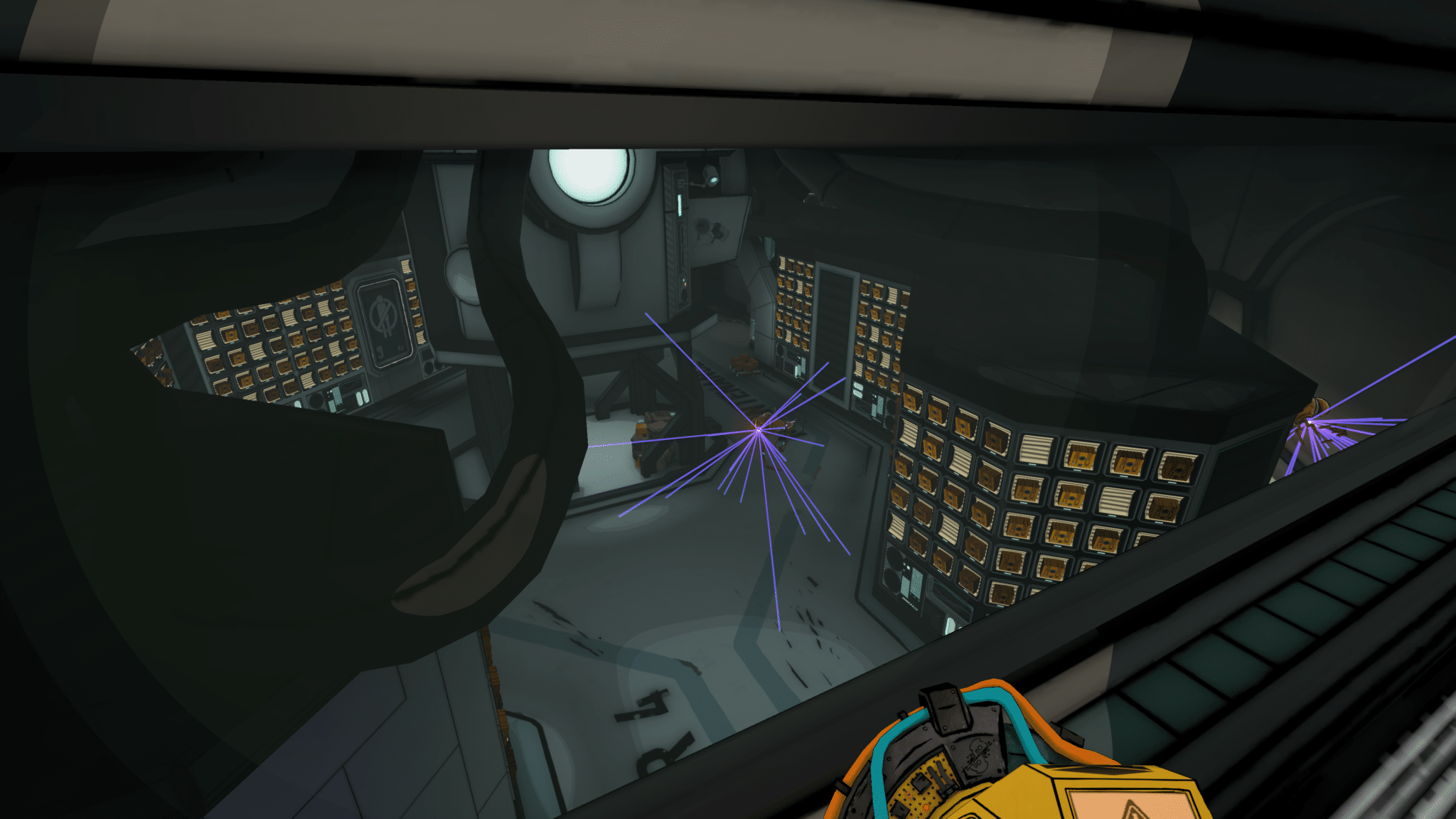The Last Worker brings a satirical narrative adventure to Quest, PSVR 2 and PC VR, mixing strong humor with tense stealth action. Jointly developed for flatscreen platforms and VR, here’s our full review:
We’ve seen countless takes on sci-fi dystopian futures over the years and in The Last Worker, they all seem to be happening simultaneously. Healthcare only exists for the rich, you live where you work, there’s heavy environmental pollution, while automation runs rampant. Truly unimaginable. A textbook example of a mega-corporation gone mad but despite this overly familiar premise, strong writing keeps it fresh enough.

Playing the world-weary Kurt, every Jüngle employee except you was fired and replaced by robots, making him the last human worker. After living in isolation for many years with his robot companion, Skew, he’s approached by an activist group to take down Jüngle for good. It’s an over the top premise that could only happen in fiction and The Last Worker plays to these situational absurdities well, punching up against late stage capitalism and its grubby excesses through entertaining satire.
A quick tutorial eases you into Kurt’s daily shifts, which involves delivering as many packages as possible within a time limit through his hoverpod, exploring an imposing warehouse and grabbing them with a gravity gun-style ‘JüngleGun’. Each package has labels detailing its size and weight which requires checking and if everything looks good, send it away. If the information doesn’t match or there’s packaging damage, take it to recycling.
Just don’t be too hasty. Incorrect handling penalizes you and once the shift’s over, The Last Worker assesses your work, firing Kurt if you scored terribly. I worried this might become repetitive but fortunately, these segments aren’t that frequent and Kurt’s cynical commentary over items like “Baby’s First VR Goggles” helped. Crucially, these shifts usually have sub-objectives relating to the plot, like throwing rats onto robots to cause breakdowns, which often directs you somewhere else.

Kurt’s journey takes him into many restricted zones, often needing to dodge patrol bots. Stealth in a pod isn’t especially conventional and aside from some brief narrative moments, Kurt never leaves this vehicle.
Thankfully, it’s surprisingly quiet and Jüngle’s massive warehouse provides convenient cover to sneak about. Advancing requires studying movement patterns and finding gaps, sometimes requiring very precise timing. Getting caught forces a restart, though generous checkpoints ease those frustrations.
Stealth sections feel tense and by placing us directly inside this world, playing in VR feels more atmospheric than flatscreen thanks to its increased immersion. Later levels provide additional tools like an EMP gun for destroying smaller robots, which keeps the action varied.
Kurt also picks up a scanner for solving puzzles, matching shapes shown in a 3×3 grid on his gun to unlock doors. Sometimes that’s paired with a second puzzle that needs completing in a time limit, making this somewhat frantic.

The gameplay isn’t particularly groundbreaking but there’s a fun sense of accomplishment that comes with escaping patrol robots, though storytelling is where this truly shines. Thanks to a good script, The Last Worker highlights the lack of humanity often seen when companies pursue unsustainable levels of growth, looking at the cost behind such ambitions. Strong cast performances only build upon this further, while the hand painted art style adds significant character to an otherwise bleak setting.
Comfort
The Last Worker mostly sticks with artificial smooth locomotion for movement, while the limited number of segments outside the pod see Kurt moving by pushing a walking stick. The pod turning speed can be changed, but there’s movement vignettes for additional comfort, alongside adjustable haptic feedback strength for the headset and controllers. Anyone playing on PC or PS5 can seamlessly swap between the VR and flatscreen modes, and the latter option uses FPS-style controls.
On PSVR 2, The Last Worker reprojects its 60 frames-per-second gameplay to 120Hz, as previously confirmed by Wolf & Wood’s creative director. This didn’t cause any noticeable problems for me, though some may find this uncomfortable. For more details on reprojection, check out our PSVR 2 tech analysis.
After a seven hour campaign, The Last Worker concludes with three potential endings, which I won’t spoil here. Everything follows a set course until this divergence point, so don’t worry about making ‘wrong’ decisions like it’s Mass Effect or a Telltale game. Better still, you can jump back to this point at will through a chapter select menu once you’ve hit credits. Two decisions shape this pivotal moment.
I can’t explain why without spoilers but I wasn’t completely sold on this ending. The build up within this final chapter feels a little odd, and even the ‘good’ ending leaves some unanswered questions. However, this approach also fits the narrow scope of Kurt’s story; you only see this world through his eyes and from what other people tell you. So despite wanting to explore the implications of his actions further, it still works from a narrative perspective, leaving me with mixed feelings.

The Last Worker Review – Final Verdict
The Last Worker is an entertaining title that doesn’t overstay its welcome. By taking aim at late stage capitalism, this over-the-top journey offers a fine narrative and great satirical humor, coupled with tense but enjoyable stealth missions. While I wanted more from the ending, this doesn’t greatly detract from the wider experience. It’s well-paced, fun, and comes recommended for anyone after a new adventure.

UploadVR focuses on a label system for reviews, rather than a numeric score. Our reviews fall into one of four categories: Essential, Recommended, Avoid and reviews that we leave unlabeled. You can read more about our review guidelines here.


























